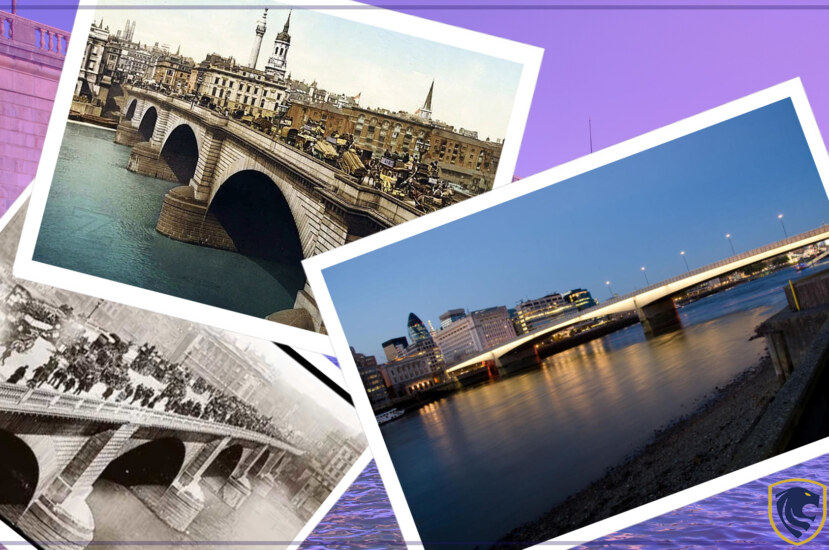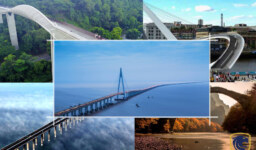London bridge in its earliest stages.

The First Bridge to Cross the River Thames: The London Bridge
The bridge becomes full of buildings
The Bridge was falling down

The First Bridge to Cross the River Thames: The London Bridge
Modern London Bridge
2017 terrorist attack
The Lord Mayor and Freemen of the City drove a flock of sheep across the bridge on July 11, 2009, ostensibly by ancient right, as part of the annual Lord Mayor’s charity appeal and to commemorate the 800th anniversary of the building of Old London Bridge during King John’s reign.

The First Bridge to Cross the River Thames: The London Bridge
London Bridge with the oblong Walkie-Talkie structure at right and the 2017 security barriers




